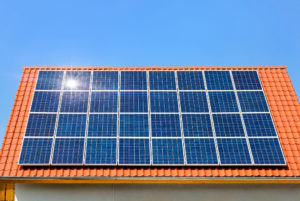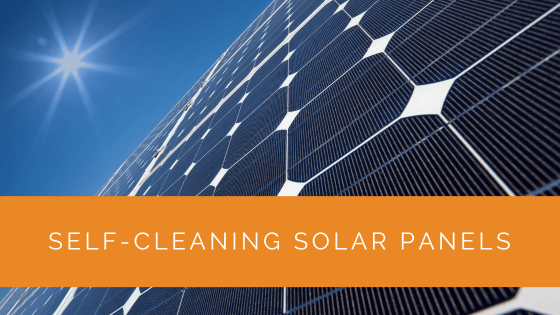The global transition to a more sustainable future heavily relies on the growth of renewable energy sources, with solar power playing a pivotal role. Solar panels have become increasingly popular for residential and commercial installations, providing a clean and efficient energy source. However, one of the challenges solar panel owners face is the accumulation of dust, dirt, and other debris on the panel’s surface, leading to a significant decrease in efficiency. Researchers and engineers have developed innovative self-cleaning solar panels to combat this issue, poised to revolutionize the renewable energy industry.
Contents
- 1 Key Takeaways
- 2 Functionality of Solar Panels and the Impact of Dust and Dirt
- 3 The Advancements in Self-Cleaning Solar Panel Technology
- 4 Electrostatic Repulsion: A Promising Self-Cleaning Technology
- 5 Nature-Inspired Approach: Lotus Leaf Coating
- 6 Revolutionizing the Renewable Energy Industry
- 7 Case Study: Enhancing Efficiency with Self-Cleaning Solar Panels
- 8 Expert Insights From Our Solar Panel Installers About The Innovation of Self-Cleaning Solar Panels
- 9 Experience Solar Excellence with Us!
- 10 Conclusion
Key Takeaways
- The accumulation of dust and dirt on solar panels can reduce their efficiency by up to 30%, impacting the return on investment for solar panel owners and necessitating costly and time-consuming cleaning.
- Recent advancements in self-cleaning solar panel technology, including hydrophobic and oleophobic coatings and electrostatic repulsion, offer innovative solutions to keep panels clean and efficient.
- Self-cleaning solar panels have the potential to revolutionize the renewable energy industry by improving efficiency and reducing maintenance costs, making solar power more accessible and cost-effective for both large-scale and residential installations.
Functionality of Solar Panels and the Impact of Dust and Dirt
Solar panels convert sunlight into electricity, with their efficiency directly linked to the amount of sunlight they can absorb. However, when dust and dirt particles accumulate on the panel’s surface, they obstruct the sunlight, substantially reducing energy production. This loss of efficiency can be as high as 30%, significantly impacting the return on investment for solar panel owners. To maintain optimal performance, regular cleaning of solar panels is required, which can be both time-consuming and costly, especially for large-scale installations such as solar farms and utility-scale projects.
The Advancements in Self-Cleaning Solar Panel Technology
While self-cleaning solar panels are not entirely new, recent technological advancements have made them a more viable and efficient solution. These innovative panels are designed with a special coating with unique properties, allowing them to effectively repel dust, dirt, and water. The coating is made from hydrophobic and oleophobic materials, repelling water- and oil-based substances. This exceptional combination of properties ensures that the surface remains clean and unobstructed while also facilitating rainwater in washing away any debris that may settle on the panel.
Electrostatic Repulsion: A Promising Self-Cleaning Technology
Among the most promising self-cleaning solar panel technologies is the principle of electrostatic repulsion. This method involves applying a thin transparent electrode layer on the surface of the solar panel, which generates an electrostatic field when a small voltage is applied. This electrostatic field repels dust particles, preventing them from settling on the panel’s surface and thereby maintaining efficiency. Extensive testing has been conducted in various environments, including dust-prone regions like deserts, where dust accumulation poses a significant challenge to solar panel performance.

Nature-Inspired Approach: Lotus Leaf Coating
Using nature, researchers have developed a synthetic coating that mimics the self-cleaning mechanism of the lotus leaf. The surface of the lotus leaf is covered in microscopic bumps that prevent water droplets from adhering to it. Instead, the water droplets roll off the leaf, carrying away dirt and debris. This lotus leaf-inspired coating can be applied to solar panels, enabling them to repel dust particles and stay clean and efficient for prolonged periods.
Revolutionizing the Renewable Energy Industry
The development of self-cleaning solar panels can revolutionize the renewable energy industry by significantly improving efficiency and reducing maintenance costs associated with solar power generation. This technology holds particular relevance for large-scale installations, where regular cleaning can be labor-intensive and expensive. By incorporating self-cleaning capabilities, solar farms, and utility-scale projects can ensure optimal performance without requiring frequent manual cleaning. Moreover, self-cleaning solar panels also benefit residential and commercial installations, making solar power a more attractive and cost-effective option for a broader range of consumers.
Case Study: Enhancing Efficiency with Self-Cleaning Solar Panels
Background
Solar Panels Network USA embarked on a project to install a large-scale solar farm in a desert region, known for its high dust levels and harsh environmental conditions. The primary challenge was to maintain the efficiency of the solar panels without incurring significant maintenance costs.
Project Overview
Our objective was to implement a solution that would keep the solar panels clean and operational despite the constant dust exposure. We decided to utilize the latest advancements in self-cleaning solar panel technology, specifically focusing on hydrophobic and oleophobic coatings, as well as electrostatic repulsion methods.
Implementation
We began by selecting solar panels equipped with hydrophobic and oleophobic coatings. These coatings repel water and oil-based substances, preventing dust and dirt from adhering to the surface. Additionally, we incorporated panels with electrostatic repulsion technology, which generates an electrostatic field to repel dust particles.
Results
The implementation of these self-cleaning technologies yielded impressive results. The panels with hydrophobic and oleophobic coatings remained significantly cleaner over time, with minimal maintenance required. The electrostatic repulsion technology was especially effective, reducing dust accumulation by up to 90% in the most dust-prone areas.
Summary
This case study demonstrates the substantial benefits of integrating self-cleaning technologies into solar panel installations. By leveraging these innovative solutions, we ensured optimal performance and efficiency, even in challenging environments. Our approach not only reduced maintenance costs but also maximized energy production, reinforcing the viability of solar power as a sustainable energy source.
Expert Insights From Our Solar Panel Installers About The Innovation of Self-Cleaning Solar Panels
As an experienced installer, I’ve seen firsthand how dust and dirt can drastically reduce solar panel efficiency. The development of self-cleaning panels is a significant leap forward, ensuring sustained performance without the need for frequent maintenance.
Senior Solar Installer
Integrating hydrophobic and oleophobic coatings into solar panels is a game-changer. These advanced materials prevent debris accumulation, ensuring maximum sunlight absorption and energy generation.
Lead Technician
The electrostatic repulsion technology is particularly promising for areas with high dust levels. This innovative approach keeps panels clean and operational, even in challenging environments.
Solar Installation Specialist
Experience Solar Excellence with Us!
Trust in Solar Panels Network USA, where our seasoned experts deliver top-quality solar solutions for homes and businesses nationwide. With a legacy of countless successful installations and a commitment to sustainable energy, we’re your reliable partner in the solar journey. Ready for a brighter, eco-friendly future? Call us now at (855) 427-0058 and harness the sun’s power!
Conclusion
The advent of self-cleaning solar panels presents a game-changing solution to one of the most significant challenges solar panel owners face. With the ability to repel dust particles and maintain optimal performance, this innovative technology enhances the efficiency of solar panels and reduces the maintenance costs associated with their operation. Self-cleaning solar panels are poised to accelerate the global transition toward a more sustainable and environmentally friendly future.
As research and development in self-cleaning solar panels continue to advance, this technology will likely become a standard feature in the renewable energy landscape. Integrating self-cleaning capabilities will further solidify solar power’s position as a key player in the global energy mix, offering a cleaner and more efficient alternative to traditional energy sources.
Innovative self-cleaning technologies, such as special coatings and the application of electrostatic repulsion or lotus leaf-inspired mechanisms, have revolutionized how solar panels operate. By effectively repelling dust particles and other debris, these panels maintain their efficiency over time, ensuring maximum energy production and optimal return on investment for solar panel owners.
About the Author
Solar Panels Network USA stands at the forefront of solar energy solutions, driven by a team of seasoned solar engineers and energy consultants. With over decades of experience in delivering high-quality solar installations and maintenance, we are committed to promoting sustainable energy through customer-centric, tailored solutions. Our articles reflect this commitment, crafted collaboratively by experts to provide accurate, up-to-date insights into solar technology, ensuring our readers are well-informed and empowered in their solar energy decisions.

